
A short history of panda fever worldwide
Zhan Qianhui and Zhao Siyuan
The announcement that three giant pandas, two from Atlanta, Georgia and one from Washington DC, will be sent back to China has broken the hearts of millions of Americans.
Giant pandas have once again stolen the global spotlight as visiting Chinese President Xi Jinping and German Chancellor Angela Merkel opened the Berlin Zoo's Panda Garden on Wednesday to mark the debut of two Chengdu-born pandas, 4-year-old female Meng Meng and 7-year-old male Jiao Qing. The couple landed at the zoo on June 24 to kick off their 15-year stay, raising the number of giant pandas living abroad to 48.
For decades, the animal has never failed in its duty as China's ambassador of friendship and has won hearts of thousands of fans worldwide. As China's national treasure, giant pandas have witnessed many significant diplomatic moments and been playing a key role in building China's international image.
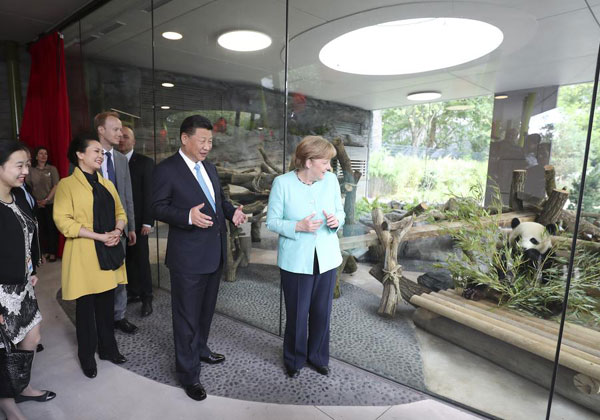
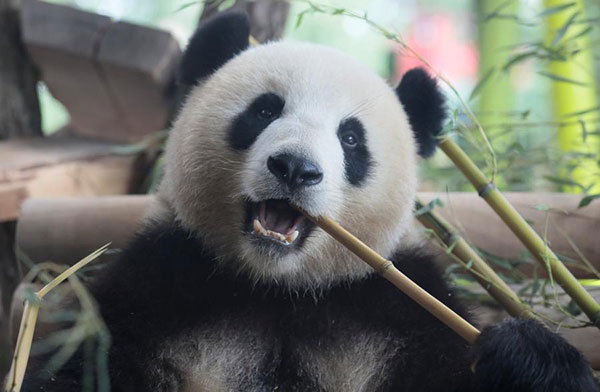
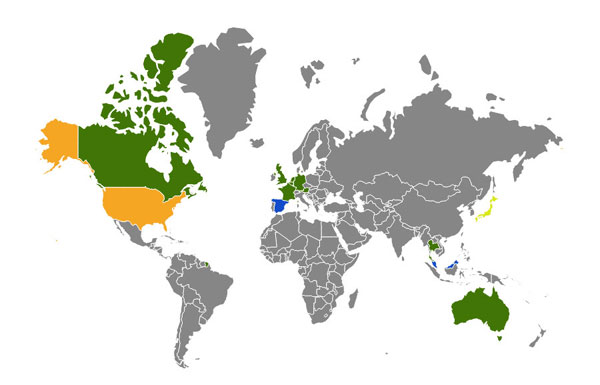
Diplomatic envoy between 1957 to 1982
Panda diplomacy started in 1957, when a giant panda named Ping Ping was sent to the Soviet Union as a national gift. However, Ping Ping didn't make the fourth year in Moscow due to the difference in climate.
Giant pandas drew worldwide attention for the first time in 1972 when then Premier Zhou Enlai announced China would give two pandas, Lin Lin and Xing Xing, to America during then US President Richard Nixon's ice-breaking visit to China. On April 20, 1972, over 8,000 American people waited in the rain for Lin Lin and Xing Xing's landing at the National Zoo in Washington DC and the zoo received over one million panda visitors the first month after they arrived.
A series of pandas were sent to Japan, France, Germany and Great Britain respectively in the following years as they were playing an increasing influential role in improving bilateral relations.
According to statistics, there were 23 giant pandas being sent to nine countries as gifts between 1957 to 1982. None of them got to come home after being given and all died abroad.
The condition of overseas pandas became a problem as many pandas suffered a variety of diseases and died at an early age.
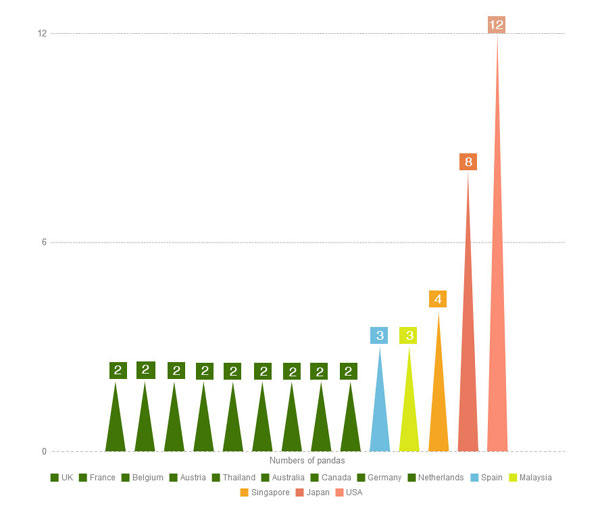
1984-1994 commercial counselor
In order to protect the endangered species, China halted the program of giving giant pandas for free in 1982 and launched the panda renting project in 1984, in which foreign governments would need to pay for pandas to stay in their country for a short term, turning pandas' roles from being diplomatic envoys to commercial earners.
Between 1984-1988, dozens of cities in North America signed the renting contracts with China. And a three-month show in the US brought millions of dollars in revenue. Distinguishing themselves from the diplomatic stage, pandas once again proved their value in the commercial field.
Frequent events abroad delayed giant panda's breeding and training them for acrobatic shows also drew criticism.
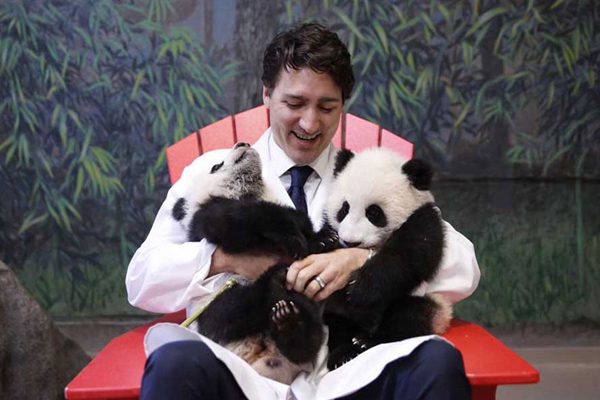
1994-now cooperative breeding
The cooperative breeding program replaced the renting project in 1994. Under the new agreement, a receiving country needs to pay China $10 million for a 10-year loan of giant pandas. Two giant pandas were sent to Japan as scientific research envoys for the first time in 1994.
During the past 22 years, the effect of the project has been well received as this kind of cooperation proved to be more beneficial for the comprehensive research on giant pandas.
Mei Lun, Mei Huan and Bao Bao are all part of the 10-year China-US cooperative breeding project which started in 2000.
According to the cooperative breeding agreement between China and the US, all cubs born in the US should move to China when they are 4 years old. Now four US zoos - in Washington, Atlanta, Memphis and San Diego - now house giant pandas.
By now, China has built long-term cooperative projects with 14 countries with a total of 48 giant pandas living abroad.
Giant pandas' decades of diplomatic service has won them worldwide adoration and made them the most successful ambassadors of China. Nearly 60 years later, the fever for these Chinese cuties has not cooled.
Though the young pandas' departures may be heart-breaking for Americans at present, one thing we can be sure of is that the giant pandas will keep bringing joy and happiness to people across the world.
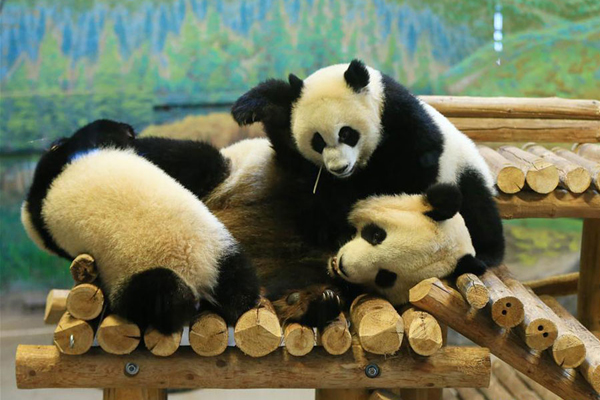
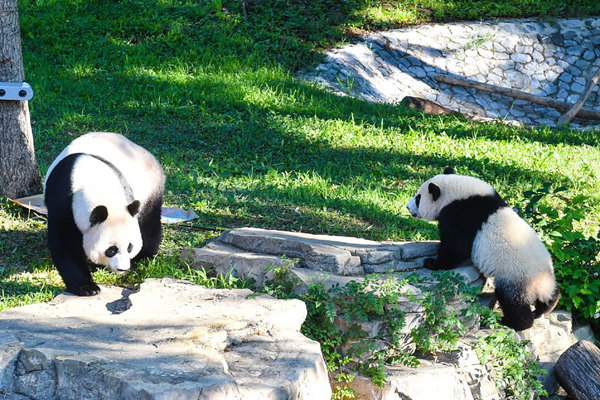
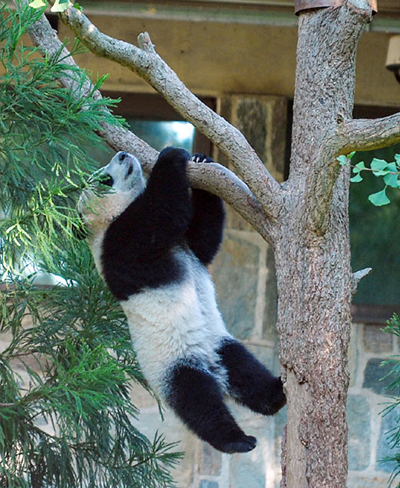
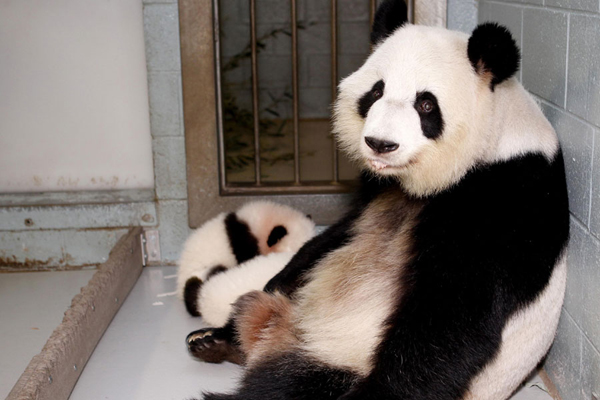
Panda cubs Mei Lun and Mei Huan sleep at their mother's feet at the Atlanta Zoo in Atlanta, Georgia, US November 14, 2013. The cubs will sent back to China on Thursday[Photo/Agencies]
Mei Lun and Mei Huan, born on July 15, 2013 at Zoo Atlanta in Georgia, were the first surviving US-born pair of giant panda twins.
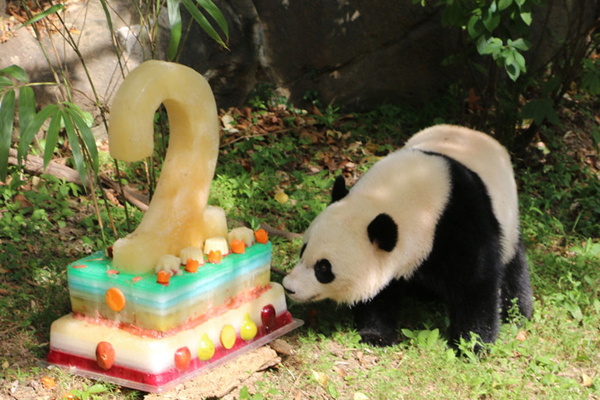
Giant panda Bao Bao celebrates her two-year birthday at the Smithsonian's National Zoo in Washington on Aug 23, 2015 amid a large crowd of fans. Chen Weihua/China Daily
Bao Bao, born on Aug 23, 2013 at the Smithsonian's National Zoo in Washington DC, was the child of the superstar couple Mei Xiang and Tian Tian, who were sent to the US in 2000 under the cooperative breeding agreement. On her 100-day birthday, Bao Bao became the first panda to receive blessing videos from both the first ladies of China and the US, Peng Liyuan and Michelle Obama.
Japan
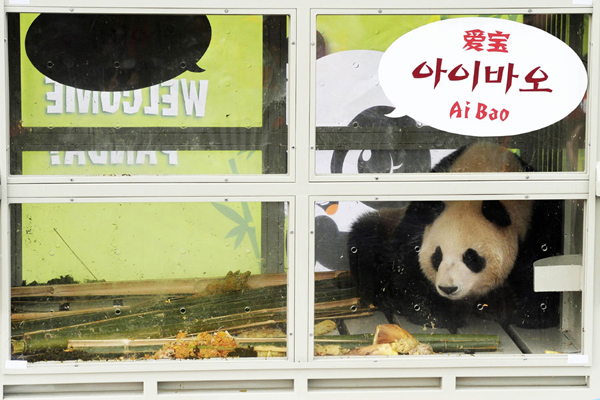
A panda named Aibao, which means lovely treasure, is seen during a welcoming ceremony for a pair of giant pandas coming from China, at a cargo terminal of the Incheon International Airport in Incheon, South Korea, March 3, 2016. [Photo/Agencies]
The Japanese are truly obsessed with giant pandas. Ever since the first pair, Kang Kang and Lan Lan, settled in Tokyo's Ueno Zoo in 1972, hundreds of thousands of Japanese people's hearts have been captured. To make sure that Kang Kang and Lan Lan would arrive safely, government even sent fighters to escort the panda plane.
In 2011, the arrival of a panda couple, Li Li and Zhen Zhen, stirred a new round of panda mania. Various panda-themed products kept emerging on shelves. The next year, a panda cub was born and the news lifted the Japanese from their grief over the Fukushima Daiichi Nuclear Disaster.
However, the newly-born cub didn't make his first week, which astounded the whole country. The zoo director kept blaming himself and burst into tears during the live news. Crowds of people brought flowers to the zoo to send their condolences.
A Japanese TV station interviewed a panda keeper when two pandas were about to go back to China. Speaking of the leaving pandas, the keeper couldn't stop crying in front of the camera. Pandas were seen off by Japanese people in tears.
UK
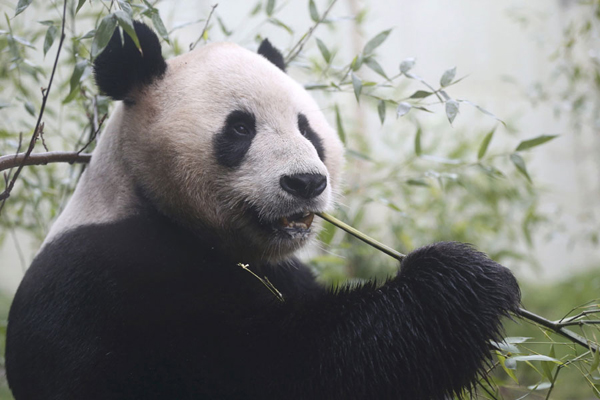
Tian Tian, a giant panda eats bamboo in the outdoor enclosure at Edinburgh Zoo ,Scotland April 12, 2016. The Royal Zoological Society of Scotland and Royal Botanic Garden Edinburgh will perform research into the complexity of the panda diet. [Photo/Agencies]
Tian Tian and Yang Guang, who moved to Britain in 2011, were the only two giant pandas in the UK. Their arrival brought a new impetus to the local economy in Scotland. The annual income of Edinburgh Zoo has risen from 5 million pounds ($6 million) to 15 million pounds ($18 million) since the pandas' arrival, with a 51% increase in visitors. The zoo even installed a panda cam for people to view the pandas' daily life through the internet.
One key issue that concerned most British during the Scotland Independence Referendum is who the two pandas would belong to. As a gift to the UK, they would be moved to England if Scotland became independent, which angered the Scottish, whose rallying cry was "Keep your hands off our pandas".
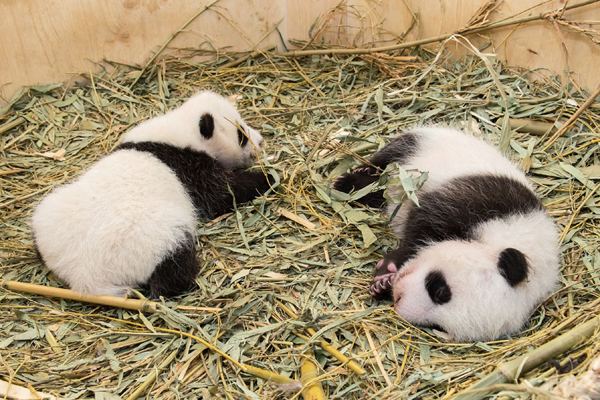
Giant Panda twin cubs which were born on August 7, 2016, are seen in a breeding box inside their enclosure at Schoenbrunn Zoo in Vienna, Austria September 28, 2016. [Photo/Agencies]
Germany
Bao Bao received a head of state-level welcome ceremony when sent to Germany in 1980 and enjoyed VIP treatment at Berlin Zoo. But his luck didn't continue on the dating market and his lovelife was not smooth sailing.
Tian Tian, the original partner sent to Germany with BaoBao, died early. In order to find a perfect mate for BaoBao, the Berlin Zoo arranged a cross-border date by sending it to the UK. But the two pandas started fighting the very moment they met and the blind date ended in injury.
The zoo didn't stop trying and borrowed another panda, Yan Yan, from China in 1997 in the hope of a good result. Staff conducted artificial insemination on Yan Yan for eight consecutive years but all efforts failed. Yan Yan died of intestinal disease in 2007, leaving BaoBao alone in his later years. Bao Bao passed away five years later and he was the oldest male giant panda.
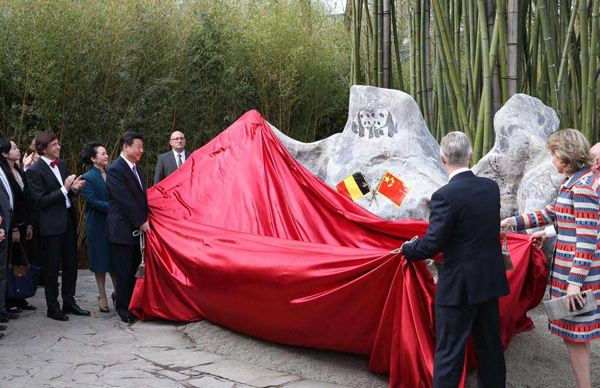
Chinese President Xi Jinping (3rd L, front), his wife Peng Liyuan (2nd L, front), Belgian King Philippe (2nd R, front) and Queen Mathilde (front R) unveil the panda house together at the Pairi Daiza zoo in Brugelette, Belgium, March 30, 2014. [Photo/Xinhua]
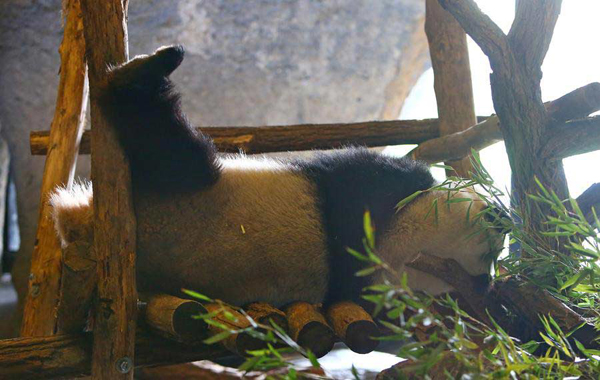
Photo taken on March 27 shows Xing Hui, the male panda, in the Pairi Daizi zoo in Belgium. [Photo/Xinhua]